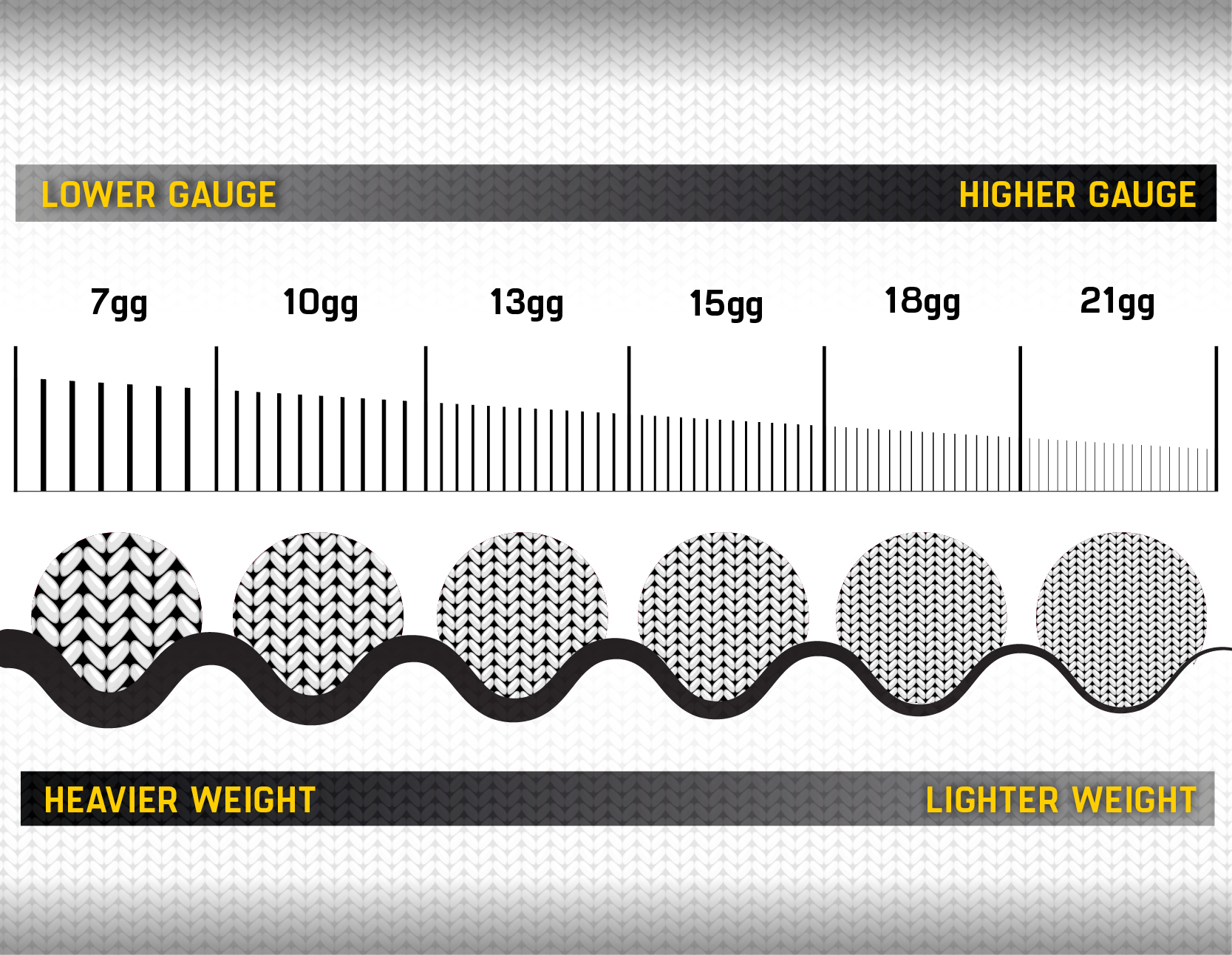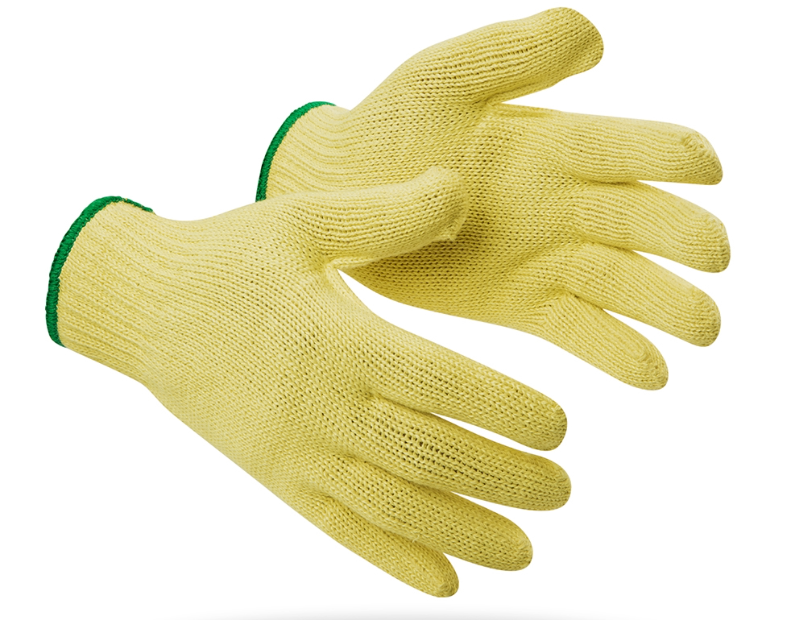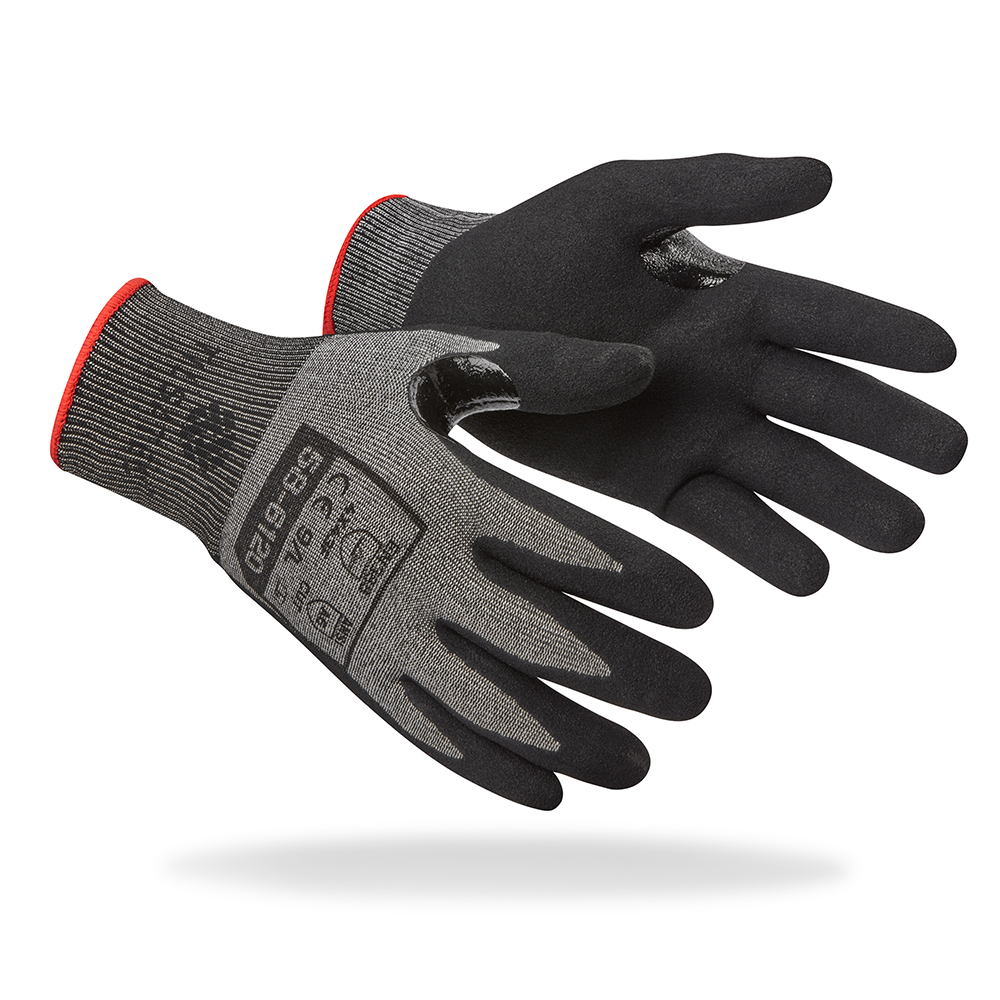What is the gauge of a glove liner?
A liner gauge is essentially the thickness of the glove, and the numbers relate to the number of stitches per inch. When a glove is knitted in manufacturing, the machine uses a certain number of needles. The more needles used, the thinner the liner and believe it or not, the fewer needles used, the thicker the resulting liner.
How are levels of gauge measured?
Typically glove liners range from 7 to 21 gauge. Whilst you might assume the lower the number such as 7 gauge (or 7gg) would mean the lightest glove and an 18 gauge (18gg) is the heaviest, it is in fact the other way around.
The higher the gauge the thinner the glove, and the lower the gauge the thicker the glove and likely less dexterous.
See the chart below to understand how the knit structures differ.

An example of a 7 gauge glove is the Tilsatec 37-4523. A heavy-duty aramid knitted glove, it’s built for durability and to withstand the rigors of tough environments such as heavy metal pressing and stamping.
On the other hand, gloves with a higher gauge are considerable lighter and thinner and offer much higher levels of fingertip sensitivity and tactility for work with intricate parts and materials.
Industries that typically use higher gauge gloves include automotive, assembly, white goods manufacturing, aerospace and engineering.
The 58-6120 is an ultra-lightweight 18 gauge seamless knit glove delivering maximum level F cut protection but with ultimate dexterity and tactility.
Does the liner gauge affect the level of cut resistance?
It is a common misconception that the thinner the gloves the less protection a glove will offer. However, this is not the case. RhinoYarn® is our own proprietary yarn technology – an engineered yarn process that combines various technical fibres and materials to achieve significantly higher levels of cut protection without compromising on comfort or dexterity. So you will find gloves on the market at 18 gauge and now even 21 gauge that can still deliver high levels of mechanical protection. You then have to consider factors like durability, life span of the glove and cost before making your final selection.
In conclusion, understanding liner gauges is essential when selecting gloves for different industries. The gauge of a glove liner impacts the weight, thickness and dexterity of the glove and therefore your ability to do the task at hand.
View our full range of hand protection here and see which is your perfect style.







